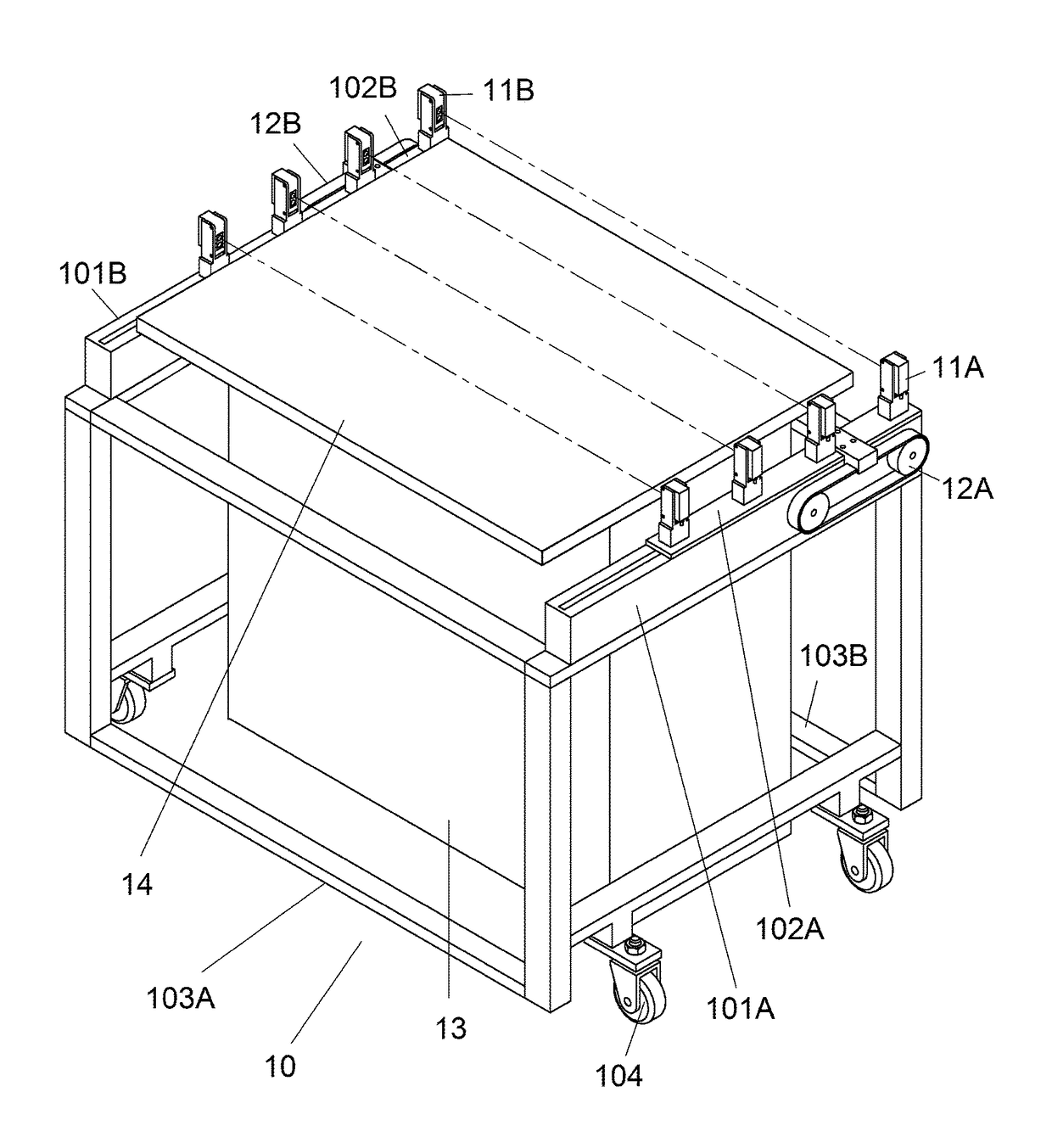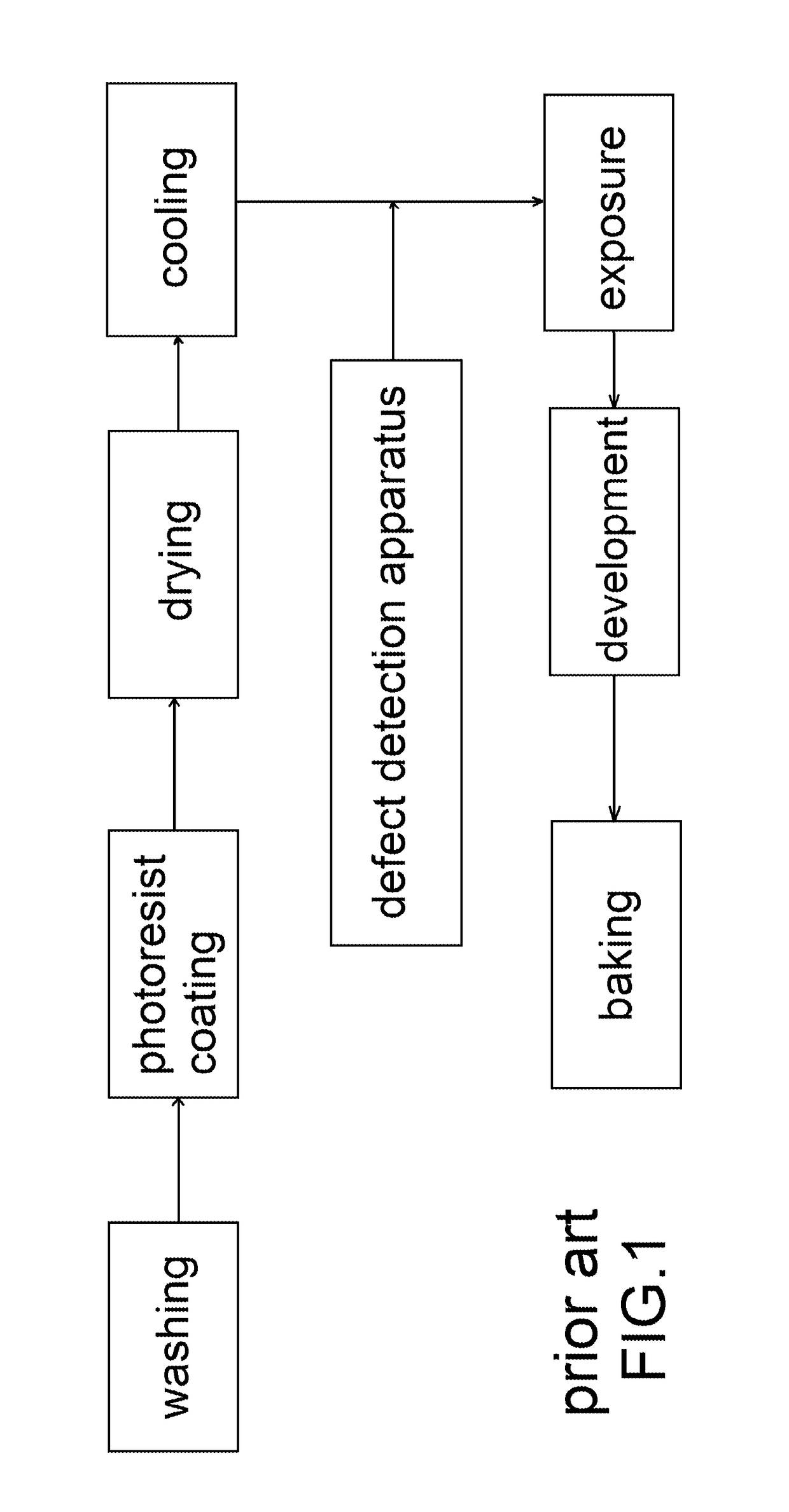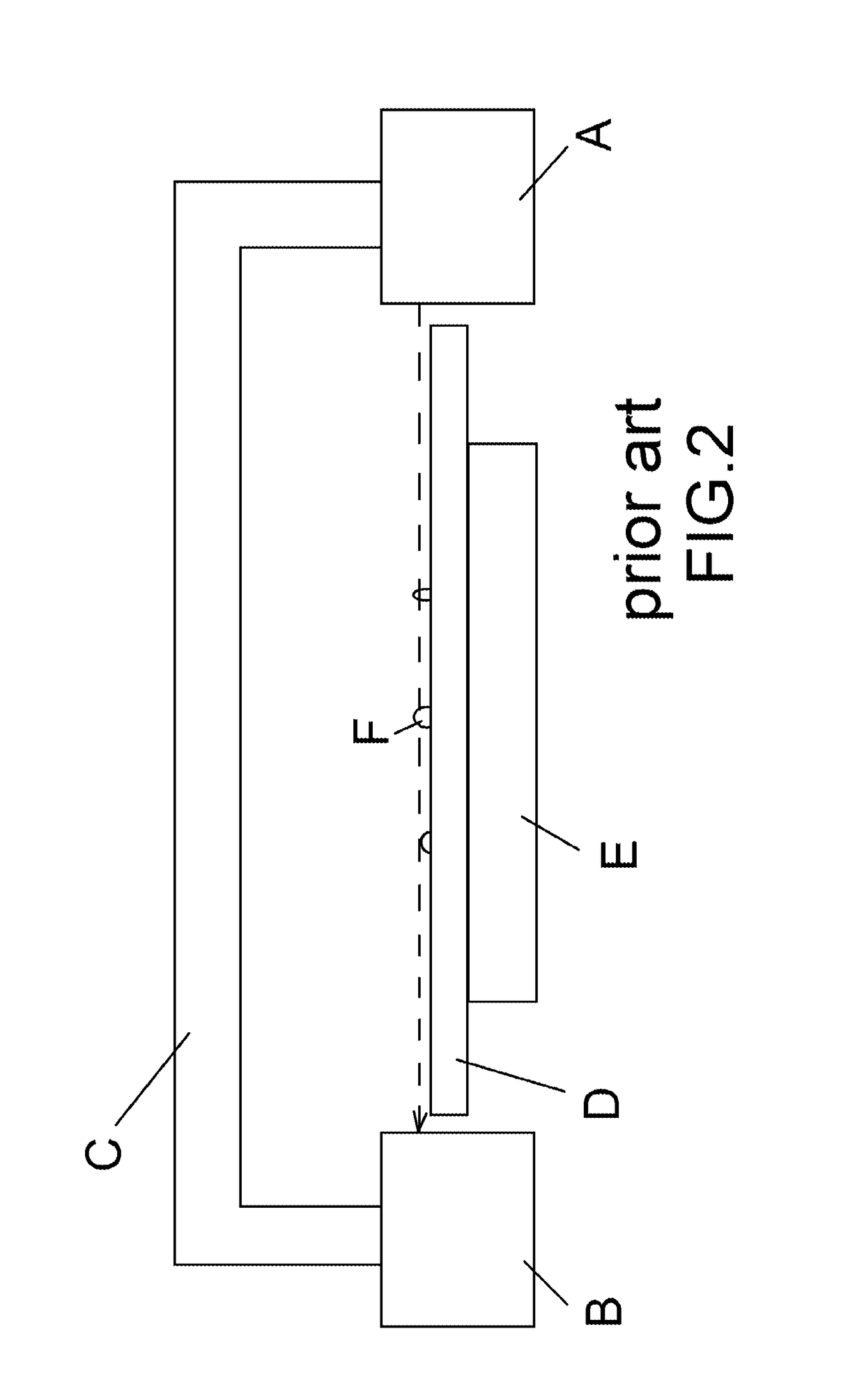Apparatus for detecting heights of defects on optical glass
a technology of optical glass and apparatus, applied in mechanical apparatus, instruments, machine supports, etc., can solve the problems of inability to adjust the distance between the transmitter a and the receiver, the top of the glass may have defects, and the damage of expensive glasses subsequently placed on the glass
- Summary
- Abstract
- Description
- Claims
- Application Information
AI Technical Summary
Benefits of technology
Problems solved by technology
Method used
Image
Examples
Embodiment Construction
[0017]Referring to FIGS. 3 to 7, a detection system in accordance with the invention comprises a detection apparatus 1 and a control console 2 as discussed in detail below.
[0018]The control console 2 includes a personal computer (PC) 20 having a display screen 21, and a controller 22 electronically connected to the PC 20. Signals can be sent from the controller 22 to the PC 20 or vice versa.
[0019]The detection apparatus 1, as the subject of the invention, includes a frame 10 having two parallel supports 101A, 101B on tops of two sides respectively, two sliding members 102A, 102B on the supports 101A, 101B respectively, two front interconnecting members 103A each having two ends releasably secured to front ends of the supports 101A, 101B respectively, two rear interconnecting members 103B having two ends releasably secured to rear ends of the supports 101A, 101B respectively, and four wheels (only three are shown) 104 rotatably mounted on bottoms of the supports 101A, 101B; four sets...
PUM
| Property | Measurement | Unit |
|---|---|---|
| distance | aaaaa | aaaaa |
| distance | aaaaa | aaaaa |
| heights | aaaaa | aaaaa |
Abstract
Description
Claims
Application Information
 Login to View More
Login to View More - R&D
- Intellectual Property
- Life Sciences
- Materials
- Tech Scout
- Unparalleled Data Quality
- Higher Quality Content
- 60% Fewer Hallucinations
Browse by: Latest US Patents, China's latest patents, Technical Efficacy Thesaurus, Application Domain, Technology Topic, Popular Technical Reports.
© 2025 PatSnap. All rights reserved.Legal|Privacy policy|Modern Slavery Act Transparency Statement|Sitemap|About US| Contact US: help@patsnap.com



